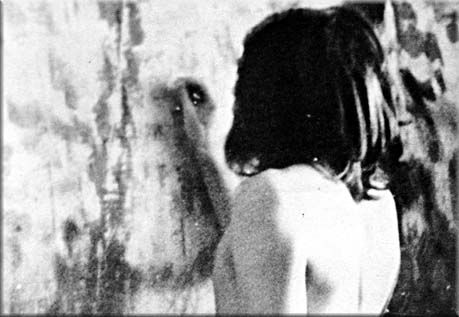Aug 16, 2001 1
Danny Morrison: The Visit
The Visit
Danny Morrison
Undated, circa 2001 (visit also described by Jim Gibney)
The minibus dropped us off at the hospital. Among our delegation were a mix of ex-prisoners, Sinn Fein representatives, and a former member of the Relatives Action Committee. Gerry Adams, as an MP, had organised the visit. On the road up to the hospital, all the gates were lying open, there were no checks, and I noticed a plaque on the side of the road in memory of those prison officers killed by republicans.
The hospital is divided into two wings: one, to the left where the cells are; the other, to the right, has surgeries for the doctor, the dentist, the optician’s and an X-ray room. An administrative section divides the two wings. I had been down the right side of the block on several occasions since 1981 as a prisoner. But this was the first time in twenty years that Jim Gibney and I had come back to the place where the ten hunger strikers had spent their agonising last days.
There was a chill about the wing. The two prison officials stayed away and allowed us to enter the cells, one by one. Jim Gibney pointed out Bobby’s cell. We huddled in and closed the door. It was terrible. This is where his great spirit left the earth. It was a tomb. Surrender or die had been the only option open to he and his comrades. We stood for a minute’s silence in honour of Bobby, Frank, Raymond, Patsy, Joe, Martin, Kevin, Kieran, Tom and Mickey. I bit my tongue and I could see that Marie Moore – ‘an bean uasal’ [literally, honoured lady] to the prisoners whom she visited throughout the blanket protest and hunger strike – was visibly upset.
We went into the room where, separately, Gerry Adams and I had met groups of hunger strikers. We told our stories. We were amazed at how small the room was. In my memory it had been like a big canteen. Here, I had met Tom McElwee, Kieran Doherty TD, Kevin Lynch and Mickey Devine, among others. Joe McDonnell, who had two days to live, was brought in in a wheelchair and kept joking throughout the visit. He smoked several cigarettes in between sipping water. I had been there to bring them up to date with our contacts with the British and the ultimately forlorn attempts to resolve the political status issue.
I can see their faces still. They had been through too many beatings, had witnessed too much British deceit and treachery, to allow false hope undermine their resolve.
I pointed out the cell in which I visited Sean McKenna on the eve of the ending of the 1980 hunger strike. Then I pointed out Brendan Hughes’ cell. Jim Gibney said that that was where Raymond McCreesh died and I felt a fresh rush of emotion knowing that this is exactly where it had happened, where his mother and father and family members had stood and suffered with their son and brother.
We also visited H-5, which along with H-3 and H-4 is still maintained. We went down its wings and into clean, newly painted cells. I looked out the slatted windows and noticed a total absence of those black crows which use to wheel in the sky over the camp and which Bobby wrote so often about in his prose and poems.
We also visited the ‘old’ Kesh and stood in the ruins of the internees’ cages, some completely gone but for their slightly raised concrete bases. Rabbits were running about everywhere, terrified, as if this was their first sight of human beings. Jim Gibney could only find the collapsed fencing around Cage 3 where he had lived for two years. Looking from here towards the wall which hides the M1 in the distance, with Cages 4 and 5 having vanished, you can see the shape of the old RAF runway begin to re-emerge from the past.
Cage 2, where I spent a year, still had its Nissan huts, with the odd, bedraggled curtain blowing in the winds that swept through its cold interior. I took a ‘boul’ around the Cage on my own and closed my eyes to take in the sensations of the past. Walking a winter’s night underneath the copper tones of security lights. The irony of fond memories of the place, of chucking water around each other on a hut summer’s day. But I was overwhelmed with the sense of loss, of those who suffered most. Who died trying to escape, or died of medical neglect or from suicide.
I pointed out the spot in Hut 17 where John Stone’s bunk and mine was. After he was released, John was killed in January 1975 on active service with Bap Kelly. The next bed to ours belonged to John Davey, from Bellaghy, a ‘ninth of August man’, who had been picked up in the original internment swoop. John, a Sinn Fein councillor, was assassinated in February 1989.
Looking up the hut I could imagine the aisle of lockers, beds and tables, the overhead lights dulled by hanging wet towels, the boiler bubbling away at one end of the hut, the backs of thirty or forty heads watching M.A.S.H. on the black and white TV at the other end.
And this scene repeated wherever republicans were jailed: in the other Cages of Long Kesh, in Magilligan, in Armagh, in Crumlin Road, on the Maidstone, in England and Scotland and the Free State. All those jails, all those prisoners, all the personal suffering, all those years, which never stopped the march of republicanism, only temporarily hindered it.
 It has withstood the blows of a million years, and will do so to the end.
It has withstood the blows of a million years, and will do so to the end.